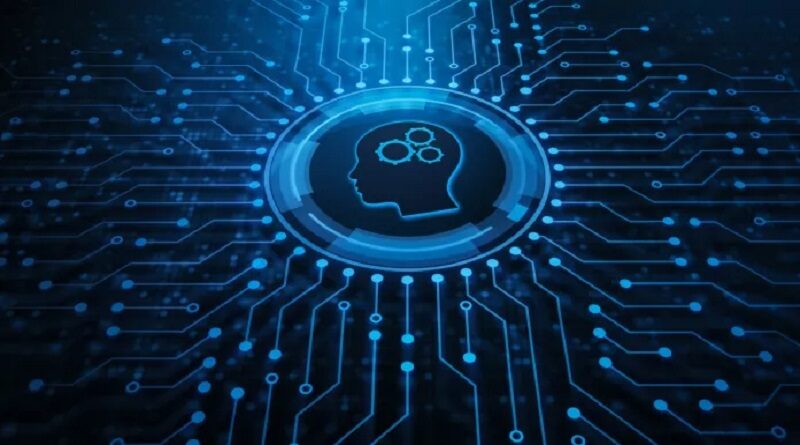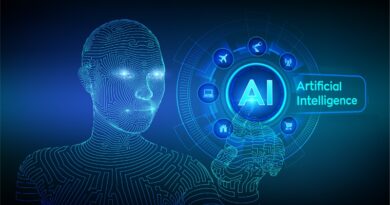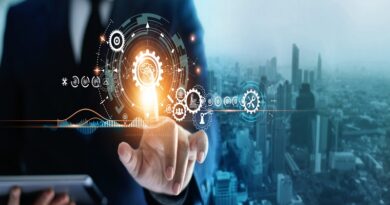The growth stage of applied AI and MLOps
Applied AI topped the list of the 14 most influential technology trends in McKinsey & Company’s “Technology Trend Outlook 2022”.
Currently, applied AI (also known as “enterprise AI”) is primarily the use of machine learning and deep learning models in real-world applications. A closely related trend that also made the top 14 of McKinsey’s is the “machine chemistry industry,” which refers to MLOps platforms and other tools that help train, deploy, integrate, and update models ML visualization in different applications and environments more easily.
McKinsey’s findings, which are in line with similar reports by research and consulting firms, show that after a decade of investment, research, and tool development, barriers to AI being applied use are decreasing.
Big tech companies, often home to many of the best machine learning and deep learning scientists and engineers, have been working on new algorithms and applying them to their products for years. Thanks to the developments highlighted in the McKinsey report, more organizations can apply machine learning models in their applications and benefit their customers and users.
The challenges of applied machine learning
The past decade has seen a resurgent and growing mainstream interest in artificial intelligence, driven primarily by deep neural networks’ proven ability to perform tasks that were previously thought to be beyond the limits of the computer. During the same period, the machine learning research community has made impressive progress in several challenging areas of AI, including computer vision and natural language processing.
Scientific breakthroughs in the field of machine learning have largely been made possible by the increasing ability to collect, store, and access data in various fields. At the same time, advances in microprocessors and cloud computing have made it possible to train and run neural networks at speeds and scales previously thought impossible.
Some of the deep learning’s landmark achievements have been followed by news cycles that have announced (and often exaggerated) the capabilities of modern AI. Many companies today try to market themselves as “AI first” or showcase their products using the latest advances in deep learning.
However, bringing ML from the lab to real-world products presents some challenges, which is why most machine learning strategies fail. Building and maintaining products using machine learning requires different infrastructure, tools, and skills than traditional software. Organizations need data lakes to collect and store data, and data engineers to set up, maintain, and configure the data infrastructure that helps train and update ML models. They need data scientists and ML engineers to prepare the data and models that will power their applications. They need distributed computing experts who can run ML models quickly and cost-effectively at scale. And they need product managers who can tailor ML systems to their business models and software engineers who can integrate the ML pipeline into their products.
The cost of enterprise AI-related data, hardware, and talent is often too prohibitive for small businesses from investing in long-term ML strategies.
It is against this backdrop that the McKinsey & Company report’s findings are worth examining.
Growth in applied AI
The report ranks tech trends based on five quantifiable measures: search engine queries, news publications, patents, research publications, and investment. It is worth noting that such quantitative measures don’t always paint the most accurate picture of the relevance of a trend. But tracking them over time can give a good estimate of how technology goes through the different steps of hype, adoption, and production cycle.
McKinsey further corroborated its findings through surveys and interviews with experts from 20 different industries, which gives a better picture of what the opportunities and challenges are.
The report is based on 2018-2021 data, which does not fully account for the downturn that capital markets are currently undergoing. the finding’s applied AI has seen growth in all quantifiable measures except for the “search engine queries” category (which is a grey area, since AI terms and trends are constantly evolving). McKinsey gives applied AI the highest innovation score and top-five investment score with $165 billion in 2021.
(Measuring investment is also very subjective and depends on how you define “applied AI” e.g. if a company that secures a huge round of funding uses machine learning as a small part of its product, will it count as an investment in applied AI?)
In terms of industry relevance, some of the ML applications mentioned in the report include use cases such as recommendation engines (e.g., content recommendation, smart upselling), detection and prevention (e.g., credit card fraud detection, customer complaint modeling, early disease diagnosis, defect prediction), and time series analysis (e.g., managing price volatility, demand forecasting). Interestingly, these are some of the areas of machine learning where the algorithms have been well-developed for years. Though computer vision is only mentioned once in the use cases, some of the applications might benefit from it (e.g., document scanning, and equipment defect detection).
The report also mentions some of the more advanced areas of machine learning, such as generative deep learning models (e.g., simulation engines for self-driving cars, generating chemical compounds), transformer models (e.g., drug discovery), graph neural networks, and robotics.
This further drives the point that the main hurdle for the adoption of applied AI has not been poor machine learning algorithms but the lack of tooling and infrastructure to put well-known and -tested algorithms to efficient use. These constraints have limited the use of applied AI to companies that don’t have enormous resources and access to scarce machine learning talent.
In recent years, there have been tremendous advances on some of these fronts. We’ve seen the advent and maturity of no-code ML platforms, easy-to-use ML programming libraries, API-based ML services (MLaaS), and special hardware for training and running ML models. At the same time, the data storage technologies underlying ML services have evolved to become more flexible, interoperable, and scalable. Meanwhile, some enterprise AI companies have started to develop and provide ML solutions for specific sectors (e.g., financial services, oil, and gas, retail).
All these developments reduce the financial and technical barriers to adopting machine learning in their business models. In many cases, companies can integrate ML services into their applications without having in-depth knowledge of the algorithms running in the background.
McKinsey’s 2021 survey of industry experts, “56 percent of respondents their organizations had adopted AI, up from 50 percent in the 2020 survey. The 2021 survey also indicated that adopting AI can have financial benefits: 27 percent of respondents attributed 5 percent or more of their companies’ EBIT to AI.”
Advances in MLOps
The second AI-related tech trend included in the McKinsey & Company report is the “industrialization of machine learning.” This is a vague term and has much overlap with the applied AI category, so the report defines it as “an interoperable stack of technical tools for automating ML and scaling up its use so that organizations can realize its full potential.”
The technologies underlying advances in this field are mostly the same which has led to the growth of applied AI (better data storage platforms, hardware stacks, ML development tools, and platforms, etc.). However, one specific field that has seen impressive developments in recent years is machine learning operations (MLOps), the set of tools and practices that streamline the training, deployment, and maintenance of ML models.
MLOps platforms provide tools for curating, processing, and labeling data; training and comparing different machine learning models; versioning control for datasets and models; deploying ML models and monitoring their performance; updating ML models as their performance decays, their environment changes, and new data becomes available. MLOps platforms, which are growing in number and maturity, bring together several different tasks that were previously carried out desperately and in an ad hoc fashion.
the industrialization of machine learning “can shorten the production time frame for ML applications by 90 percent (from proof of concept to product) and reduce development resources by up to 40 percent.”
Challenges remain for enterprise AI
Despite the advances in applied AI, the field still has some gaps to bridge. The McKinsey report states that the availability of resources such as talent and funding remain two of the hurdles for the further growth of enterprise AI. Currently, the capital markets are in a downturn, and all sectors, including AI, are facing problems funding their startups and companies.
However, despite the AI capital pie becoming smaller, funding has not stopped altogether. a recent CB Insights report, companies that have already achieved product/market fit and are ready for aggressive growth are still managing to secure mega-funding rounds (above $100 million). This suggests that companies that don’t have the margins to launch new ML strategies will have a hard time receiving outside funding. But applied ML platforms that have already cornered their share of the market will continue to draw interest from investors.
Another important challenge that the report mentions is data risks and vulnerabilities. This is becoming an increasingly critical issue for applied machine learning. Like its development lifecycle, the security threat landscape of machine learning is different from that of traditional software. The security tools used in most software development platforms are not designed to detect adversarial examples, data poisoning, membership inference attacks, and other types of threats against ML models.
Fortunately, the security and machine learning communities are coming together to develop tools and practices for creating secure ML pipelines. As applied AI continues to grow, we can expect other sectors to speed up their adoption of ML, which will in turn further accelerate the pace of innovation in the field.




